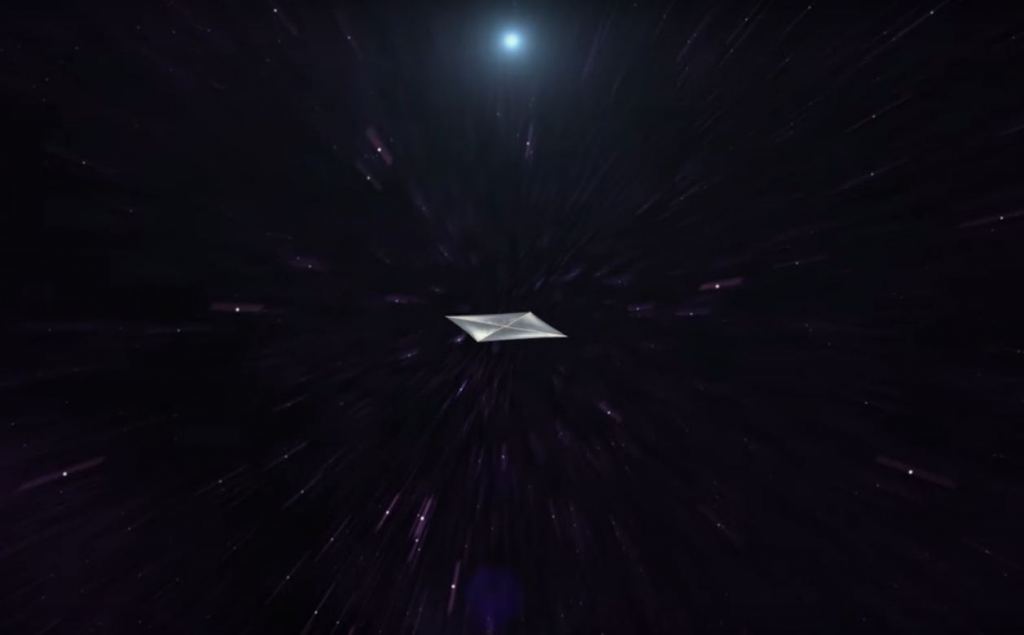Sending a Spacecraft to Another Star Will Require a Million Lasers Working Together
By Matt Williams
In 2016, Russian-American billionaire Yuri Milner founded Breakthrough Initiatives, a non-profit organization dedicated to investigating some of the most enduring mysteries of the Universe. Chief among their scientific efforts is Breakthrough Starshot, a proof-of-concept prototype that combines a lightsail, a nanocraft, and directed energy (aka. laser) propulsion to create a spacecraft capable of reaching the nearest star (Alpha Centauri) in our lifetimes.
Naturally, this presents all sorts of technical and engineering challenges, not the least of which is the amount of power needed to accelerate the spacecraft to relativistic speeds (a fraction of the speed of light). Luckily, scientists from the Australian National University (ANU) recently came up with a design for a directed-energy array made up of millions of individual lasers positioned across the Earth’s surface.
The paper that describes their research (conducted with support from Breakthrough Initiatives) was recently published in the Journal of the Optical Society of America B. The team was led by Dr. Chathura P. Bandutunga, a Research Fellow with ANU’s Centre for Gravitational Astrophysics (CGA), and included members from ANU’s ARC Centre for Engineered Quantum Systems, and the Mount Stromlo Observatory.
The plan for Breakthrough Starshot calls for a gram-scale nanocraft equipped with tiny sensors, thrusters, a camera, and a radio antenna. This nanocraft would be towed by a meter-scale lightsail that measures 4 x 4 m (13 x 13 ft) and is accelerated by a 100 gigawatts (GW) laser array. This would allow the spacecraft to achieve velocities of up to 20% the speed of light (0.2 c), allowing it to make the journey to Alpha Centauri in just 20 years.
Together, the ANU team combined expertise in many areas of optics and astronomy, ranging from fiber optic sensors and optical phased arrays to astrophysics and gravitational wave instrumentation. For the sake of their study, Dr. Bandutunga and her colleagues considered various possibilities for creating a laser array capable of generating 100 gigawatts (GW) of continuous-wave optical power.
In the end, they determined that the best option is to rely on 108 ground-based arrays acting in concert. As Dr. Bandutunga said in a recent ANU press release
“To cover the vast distances between Alpha Centauri and our own solar system, we must think outside the box and forge a new way for interstellar space travel. Once on its way, the sail will fly through the vacuum of space for 20 years before reaching its destination. During its flyby of Alpha Centauri, it will record images and scientific measurements which it will broadcast back to Earth.”

Dr. Robert Ward, a co-author on the paper, is also the founding scientist who pioneered the ANU node of this project. According to Ward, a 100 GW array is no easy task, as this is about 100 times the capacity of the world’s largest batteries today. “To achieve this, we estimate the number of lasers required to be approximately 100 million,” he said. In addition, these lasers would have to act as one and focus on a lightsail measuring no larger than 16 m2 (139 ft2).
Another major challenge is how to measure each laser’s drift. “We use a random digital signal to scramble the measurements from each laser and unscramble each one separately in digital signal processing,” said Dr. Sibley, of the ARC Centre for Engineered Quantum Systems. “This allows us to pick out only the measurements we need from a vast jumble of information. We can then break the problem into small arrays and link them together in sections.”
Then there was the challenge posed by atmospheric distortion, which is inevitable when relying on ground-based arrays. For this reason, the ANU design calls for the use of a Beacon satellite (i.e., a guide laser) stationed in orbit around Earth that would act as a conductor and bring the entire laser array together. As Professor Michael Ireland of the ANU Research School of Astronomy and Astrophysics (another co-author) explained:
“Unless corrected, the atmosphere distorts the outgoing laser beam, causing it to divert from its intended destination. Our proposal uses a laser guide star. This is a small satellite with a laser which illuminates the array from Earth orbit. As the laser guide star passes through the atmosphere on the way back to Earth, it measures the changes due to the atmosphere. We have developed the algorithm which allows us to use this information to pre-correct the outgoing light from the array.”

Of course, there is still considerable work to be done, which Dr. Bandutunga likened to the eventual journey of the Starshot itself. The next step is to start testing some of the basic elements of the mission architecture in a controlled laboratory setting. According to Dr. Bandutunga, this includes developing an algorithm to correct for atmosphere distortion and investigating various ways to combine small arrays to make larger arrays.
“The work done at ANU was to see if this idea would conceivably work,” he said. “The goal was to find out-of-the-box solutions, to simulate them and determine if they were physically possible. While this proposal was put forward by the ANU team, there is more work happening internationally to come up with unique and clever solutions to other parts of the problem. It’ll be exciting to bring these solutions together to bring the project to life.”
The science behind Breakthrough Starshot has advanced considerably in the past five years. While no target date has been announced for when the maiden voyage could begin, Yuri Milner has suggested in the past that a mission could be ready by 2036. This means that humanity could be getting its first look at a neighboring star system by the 2060s, which could include the first up-close glimpse of a potentially habitable exoplanet.
Further Reading: ANU
The post Sending a Spacecraft to Another Star Will Require a Million Lasers Working Together appeared first on Universe Today.

June 11, 2021 at 02:22AM
via Universe Today read more...

Post a Comment